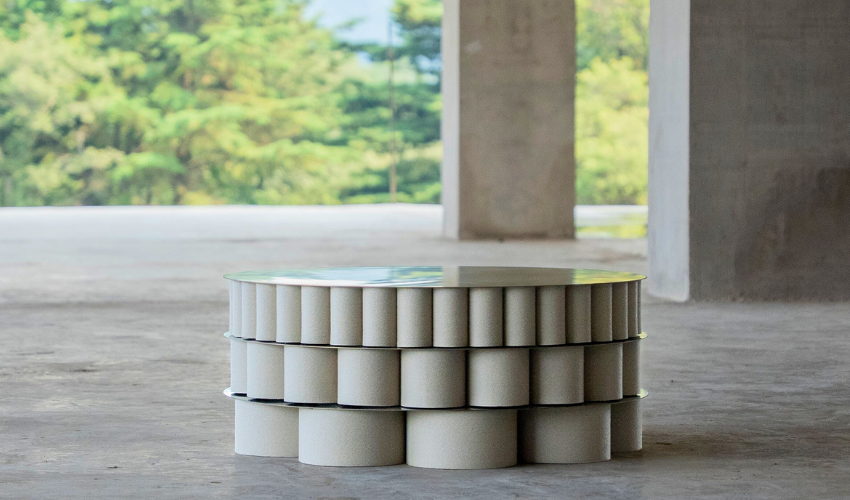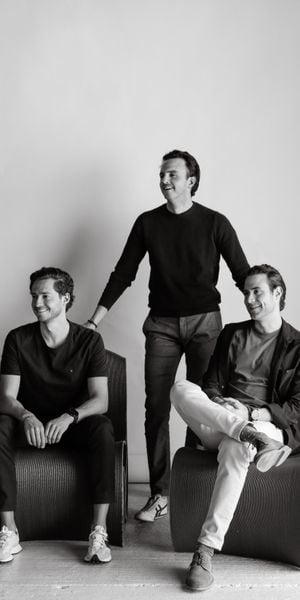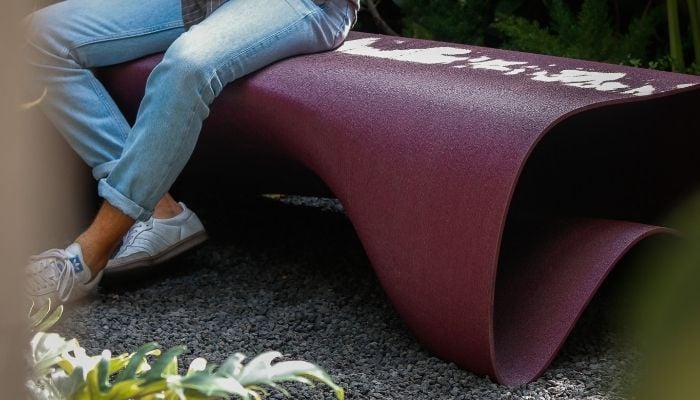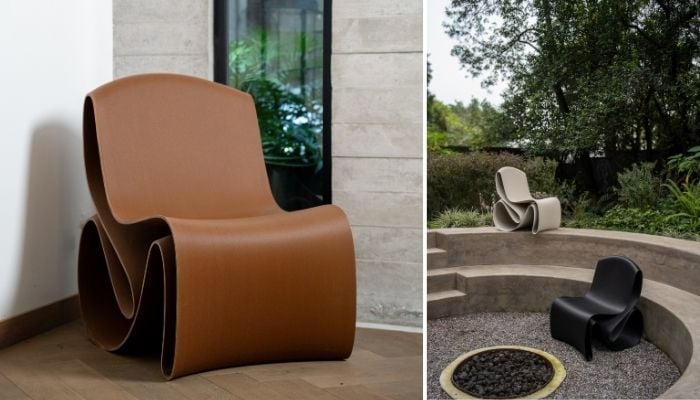Ukma and Additive Manufacturing in Contemporary Design

Large-format 3D printing has become one of the most versatile tools in contemporary design thanks to its many advantages. It provides creative freedom, supports a wide range of materials, and offers endless aesthetic possibilities. Ukma is reimagining the relationship between matter and form through this technology. Based in Mexico, the studio transforms recycled polymers and biomaterials into pieces that blend engineering, design, and experimentation. Rather than reproducing traditional methods, their approach explores how technology can create objects that are not only lived in but also felt. In this interview, the founders share how additive manufacturing became part of their creative process and discuss the benefits of working with circular materials and local production.
3DN: Could you introduce yourselves and tell us how you first got involved with 3D printing?

We are Mauricio Balmaceda, Alonso del Valle, and Diego Balmaceda, the founders of Ukma. Mauricio leads operations and technical development, focusing on materials, processes, and additive manufacturing. Alonso oversees strategy, marketing, and commercial partnerships, shaping the brand’s narrative and public presence. Meanwhile, Diego manages the financial and legal side of the business, ensuring that our growth stays aligned with our vision and values.
3D printing has been part of our process since Ukma’s early days, initially used to create small-scale prototypes. As a design and manufacturing studio, we’ve always aimed to push boundaries in technology, processes, and materials. In early 2024, through ongoing research, we saw the potential of large-format 3D printing to create complex shapes that would be nearly impossible using traditional methods. This method also comes with major sustainability benefits. It produces very little waste and allows us to work with recycled and bio-based materials. The combination of technology, customization, and sustainability led us to make 3D printing a core part of our production strategy. More than just a tool, it became a new design language for us.
3DN: What is Ukma, and how did the idea for the company come about?
Ukma was born from a shared vision among three engineers who wanted to rethink how objects are made. Our goal was to bring together design, technology, and sustainability to create pieces that are exceptional in both quality and form, but also more accessible than what was already available. We noticed a gap between mass industrial production and exclusive, high-end design: pieces that could inspire emotion but still remain accessible to more people. That idea became Ukma, a project aimed at democratizing access to high-quality design through technological innovation.
Today, Ukma operates as a laboratory where creativity, engineering, and additive manufacturing converge to shape objects that transcend pure function. These are pieces that feel alive, tell stories, and represent a new way of understanding design.
3DN: At what point did Ukma decide to incorporate additive manufacturing into its process?
It was a natural evolution. We were already experimenting with sustainable materials and alternative production methods when additive manufacturing emerged as the next logical step. Once we realized that large-format 3D printing offered complete creative freedom, letting us design without molds, reduce waste, and produce locally, we knew it aligned perfectly with Ukma’s philosophy. Since then, it has become central to our production model, allowing us to blend technology with a sense of craft and emotional resonance in every piece.

3DN: What are functional Ukmas, and what materials are they made from?
Functional Ukmas are the next evolution of our collectible pieces: objects that keep their formal and emotional identity but are designed for interaction. They’re pieces meant to be lived with, used, and capable of transforming a space. Each one is produced through large-format 3D printing, using high-performance recycled polymers and, in some cases, biomaterials made from organic waste such as olive pits or coffee husks. These materials allow us to create durable pieces suitable for both indoor and outdoor environments, all while reducing environmental impact. We like to say that they are not furniture, but living forms of design, because rather than fulfilling a function, they seek to generate an experience.
3DN: Could you walk us through the design and manufacturing process behind functional Ukmas?
It all begins with an idea, or an emotion, we want to bring to life. From there, the team develops sketches and drawings to explore the shape, proportions, and overall experience we aim to create. Once the creative direction is set, the design moves into its digital phase, where it’s modeled in 3D and refined for ergonomics, stability, and the structural behavior of the material.
At the same time, we test color, texture, and finish to ensure each piece reflects a cohesive relationship between form, material, and function. This process allows us to experiment and fine-tune details before moving into final production. Once the design is fully approved, we start manufacturing using large-format 3D printing, working with recycled polymers or biomaterials. In this way, each functional Ukma comes to life through a process where technology, design, and experimentation intersect to create something truly unique.

3DN: Any final words for our readers?
We believe design has the power to change the way we relate to both objects and our environment. Additive manufacturing allows us to do that more responsibly by reducing waste, supporting local production, and pushing the boundaries of creativity. At Ukma, we see 3D printing not just as a technology but as a creative philosophy: a tool for building pieces that connect with people and bring emotion to life through innovation, sustainability, and design.
We’re also incredibly proud to do this work from Mexico, showing that meaningful, globally relevant design and innovation can emerge from here. It reflects our creativity, technical expertise, and unique perspective on material and space. And we’re only at the beginning of what this technology can offer. We’re excited to keep exploring everything that design and technology can achieve together.

What do you think about the use of 3D printing at Ukma? Let us know in the comments or on our LinkedIn or Facebook pages! Plus, don’t forget to sign up for our free weekly Newsletter to get the latest 3D printing news straight to your inbox. You can also find all our videos on our YouTube channel.
*Credits for all photos: Ukma








